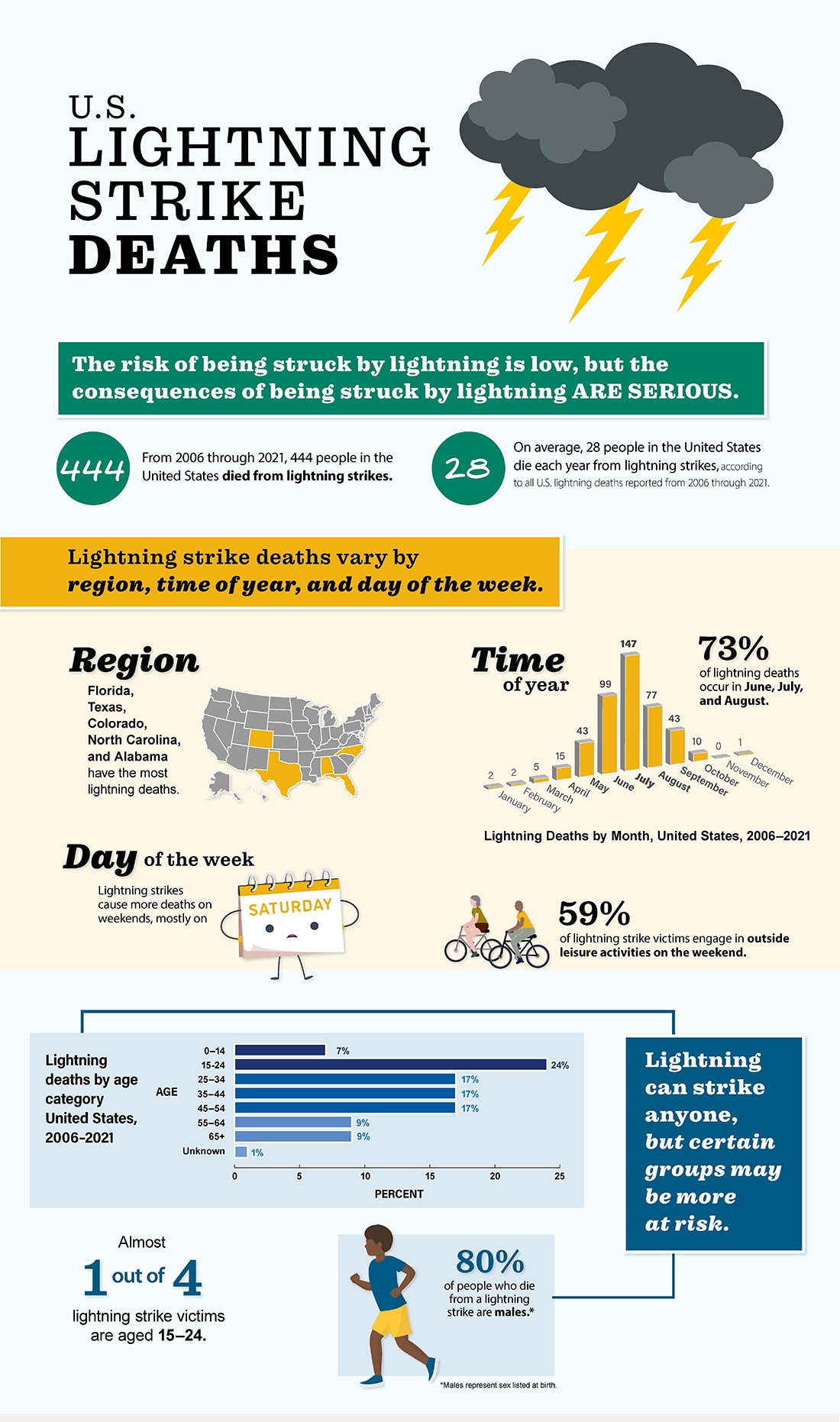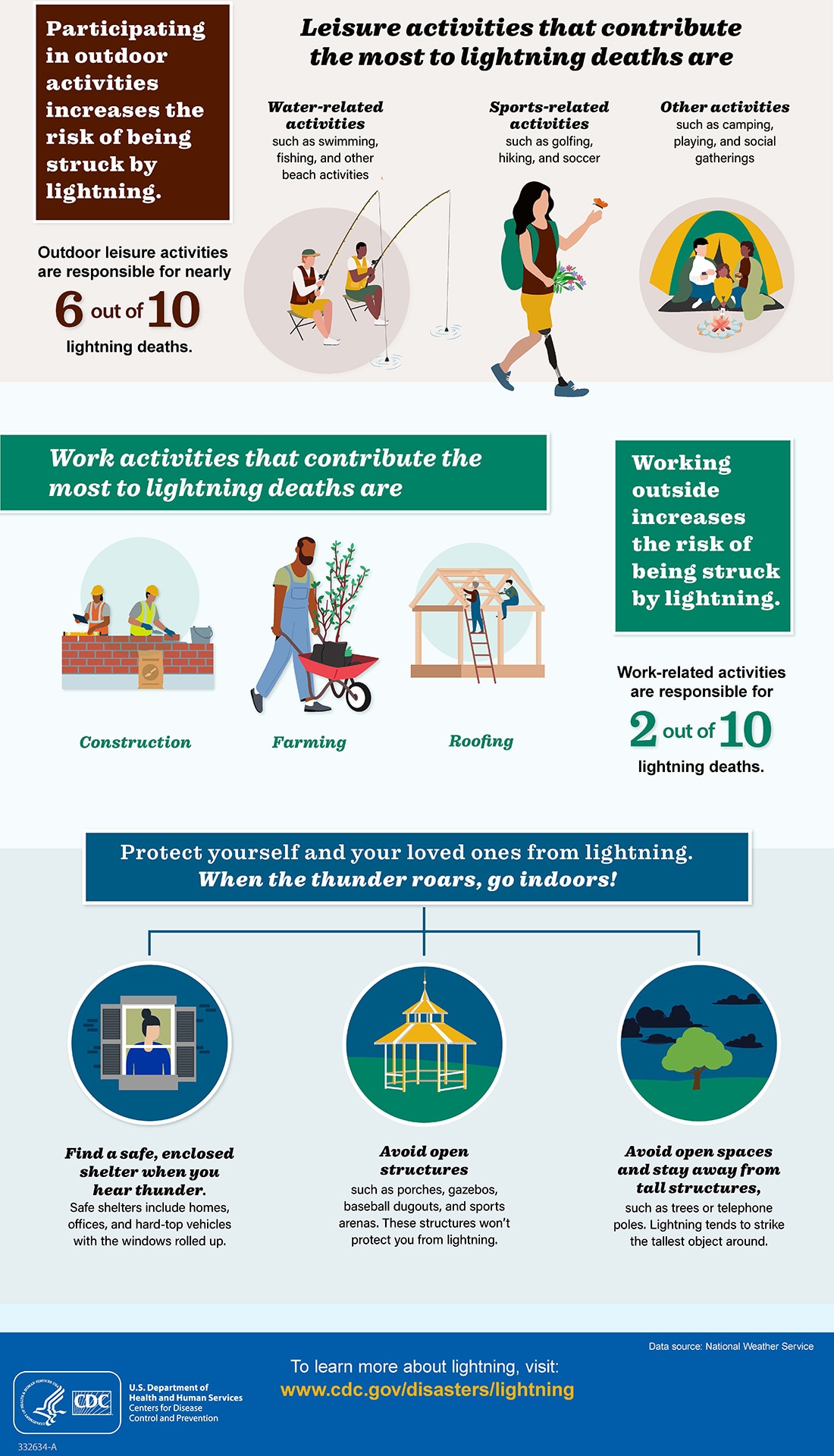U.S. Lightning Strike Deaths


U.S. Lightning Strike Deaths
The risk of being struck by lightning is low, but the consequences of being struck by lightning are serious.
- From 2006 through 2021, 444 people in the United States died from lightning strikes.
- On average, 28 people in the United States die each year from lightning strikes, according to all U.S. lightning deaths reported from 2006 through 2021.
Lightning strike deaths vary by region, time of year, and day of the week.
- Florida, Texas, Colorado, North Carolina, and Alabama have the most lightning deaths.
- 73% of lightning deaths occur in June, July, and August.
- Lightning Deaths by Month, United States, 2006-2021
- January: 2
- February: 2
- March: 5
- April: 15
- May: 43
- June: 99
- July: 147
- August: 77
- September: 43
- October: 10
- November: 0
- December: 1
- Lightning strikes cause more deaths on weekends, mostly on Saturday.
- 59% of lightning strike victims engage in outside leisure activities on the weekend.
- Lightning Deaths by Month, United States, 2006-2021
Lightning can strike anyone, but certain groups may be more at risk.
- Almost 1 out of 4 lightning strike victims are aged 15 through 24.
- Lightning Deaths by Age Category United States, 2006-2021
- 0-14: 7%
- 15-24: 24%
- 25-34: 17%
- 35-44: 17%
- 45-54: 17%
- 55-64: 9%
- 65+: 9%
- Unknown: 1%
- Lightning Deaths by Age Category United States, 2006-2021
- 80% of people who die from a lightning strike are males.*
- * Males represent sex listed at birth.
Participating in outdoor activities increases the risk of being struck by lightning.
- Outdoor leisure activities are responsible for nearly 6 out of 10 lightning deaths.
- Leisure activities that contribute the most to lightning deaths are
- Water-related activities, such as swimming, fishing, and other beach activities
- Sports-related activities, such as golfing, hiking, and soccer
- Other activities, such as camping, playing, and social gatherings
Working outside increases the risk of being struck by lightning.
- Work-related activities are responsible for 2 out of 10 lightning deaths.
- Work activities that contribute the most to lightning deaths are
- Roofing
- Farming
- Construction
Protect yourself and your loved ones from lightning. When thunder roars, go indoors!
- Find a safe, enclosed shelter when you hear thunder. Safe shelters include homes, offices, and hard-top vehicles with the windows rolled up.
- Avoid open structures such as porches, gazebos, baseball dugouts, and sports arenas. These structures won’t protect you from lightning.
- Avoid open spaces and stay away from tall structures, such as trees or telephone poles. Lightning tends to strike the tallest object around.
To learn more about lightning, visit www.cdc.gov/disasters/lightning.
Data source: National Weather Service
Page last reviewed: September 15, 2022


